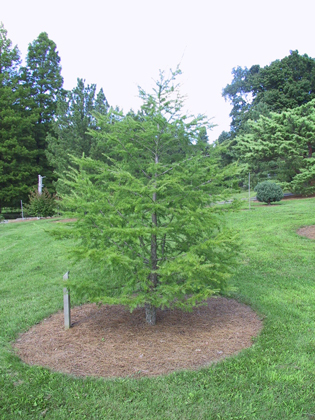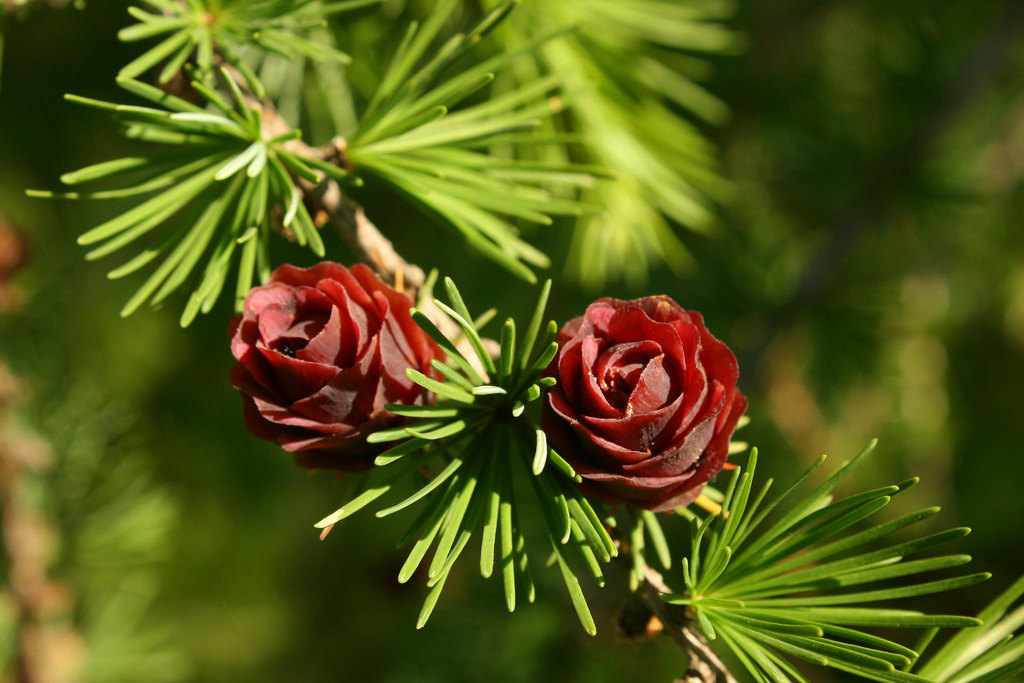Larix gmelinii var. olgensis, first described in 1930 by (Henry) Ostenfeld et Syrach Larsen is commonly known as Olga Bay larch, referring to the place in Vladivostok, Russia with the first botanical collection was made. It is a specific variety of Dahurian larch that differs from the typical variety in the following ways.
- Seed cones are larger when compared to the type, 0.72 to 1.4 inches (1.8 - 3.5 cm), exceptionally to 1.8 inches (4.5 cm) long with 16 to 30 seed scales that are dark, red-brown in color, convex in shape, opening at a 45º angle.
- Young shoots are different - densely coated with orange-brown pubescence at first, later becoming nearly glabrous.
Distribution. This variety is native to Russia, China and North Korea where it is locally common in coastal Ussuriland, but rare and local inland. It is also found at a few locations in China's Jilin and eastern Liaoning provinces was well as North Korea; it is also found at elevations up to 3,200 feet (1,000 m) above sea level in Siberia's Sikhote-Alin mountains and Ussuriland. It is formally listed as rare in Russia. The largest specimens are said to be on Oblachnaya Mountain, in the
Ussuri River's headwaters.

